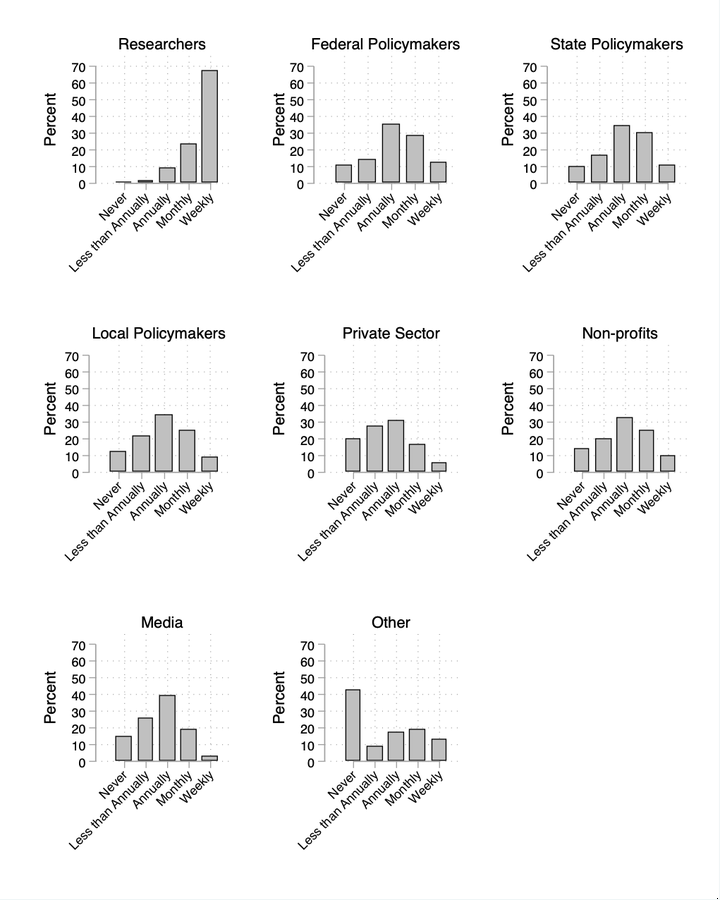The Social Structure of Climate Change Research and Practitioner Engagement: Evidence from California
 Figure 2. Frequency of researchers’ reported engagement with different audiences and/or collaborators (N=991)
Figure 2. Frequency of researchers’ reported engagement with different audiences and/or collaborators (N=991)
Abstract
Interactions between researchers and practitioners can lead to the increased use of climate science in decision-making. Past studies on these interactions have focused on the information needs of decision-makers, but less is known about why and how climate researchers choose to engage with decision-makers. Understanding the experiences, beliefs and constraints on both sides of the ‘knowledge-action gap’ is critical for implementing robust climate adaptation strategies. This study thus examines the perspectives and experiences of researchers regarding practitioner engagement, drawing from an original survey of California’s climate research community (N=991) and supplemental interviews. Given a history of support for climate research and climate change adaptation, analysis of the California case is useful as a means of characterizing the relationship between climate research and practitioner engagement. We find that most scientists want to engage more with practitioners but are constrained by several factors, including resource limitations and the challenge of building relationships. Additionally, we find that the level of interest and frequency of engagement with stakeholders varies significantly across academic disciplines. We demonstrate that building capacity within research organizations and integrating stakeholder engagement in funding criteria and professional development can help foster relationship-building between scientists and decision-makers. The analysis suggests that the social structure of climate research warrants further examination of the ways that climate researchers relate to practitioners at present.